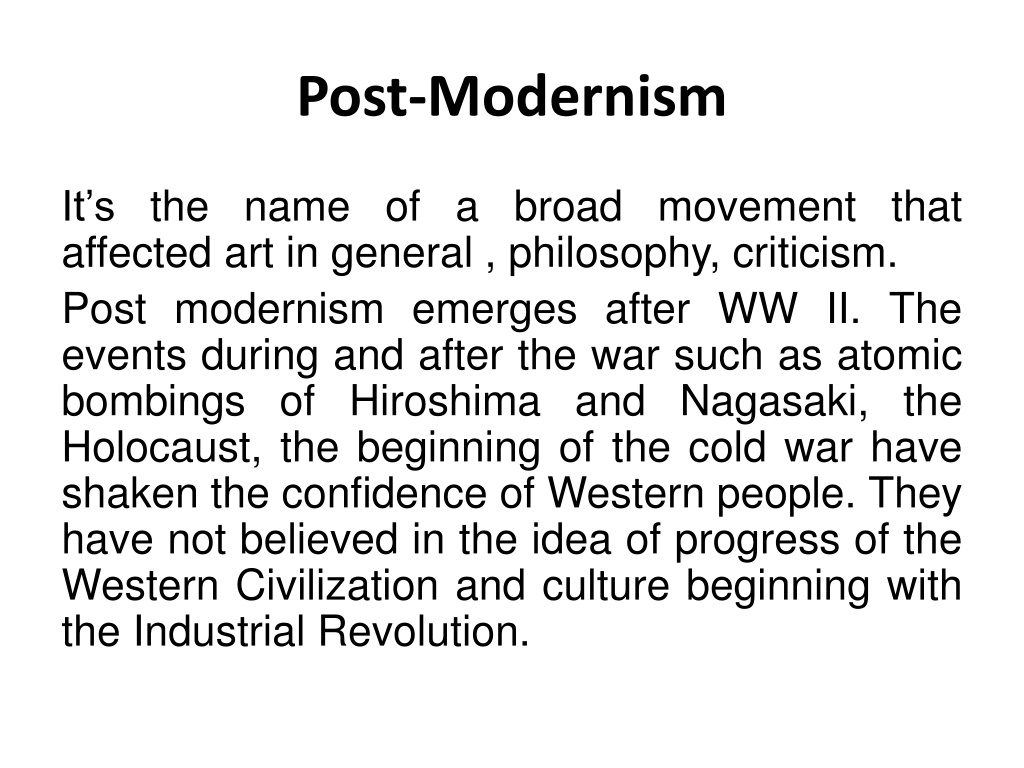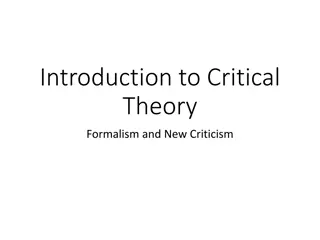Understanding Post-Modernism: Art, Philosophy, and Criticism After WWII
Post-Modernism emerged in the aftermath of WWII, challenging traditional beliefs in progress and shaping a new perspective on chaos, reality, and fiction in art, philosophy, and social systems. It blurs boundaries between high and low art forms, explores metafiction and pastiche, and emphasizes the fictional nature of reality.
Download Presentation

Please find below an Image/Link to download the presentation.
The content on the website is provided AS IS for your information and personal use only. It may not be sold, licensed, or shared on other websites without obtaining consent from the author. Download presentation by click this link. If you encounter any issues during the download, it is possible that the publisher has removed the file from their server.
E N D
Presentation Transcript
Post-Modernism It s the name of a broad movement that affected art in general , philosophy, criticism. Post modernism emerges after WW II. The events during and after the war such as atomic bombings of Hiroshima and Nagasaki, the Holocaust, the beginning of the cold war have shaken the confidence of Western people. They have not believed in the idea of progress of the Western Civilization and culture beginning with the Industrial Revolution.
Similar believes that the world is chaotic. While modernists believed in the power of the mind and thought that the mind was able to give a shape to this chaotic world, post-modernism asserts that the mind cannot give a shape to this chaotic world. to modernism, post-modernism
In post-modernist thought, there is a discredit to social systems. The social institutions have been created to control and systematize what is natural. In short, post modernism shows the fictional nature of the reality.
Postmodernism denies the boundaries between high and low forms of art and rejects rigid genre distinctions. - The novel form has been exhausted. All stylistic possibilities have already been used up. So, it is impossible to write an original novel. New novels are the imitations of previous ones.
Post-Modernist Fiction Metafiction: fiction about fiction. The aim of metafiction is to remind its readers what they are reading is only a fiction and the writers use various techniques to remind their readers of the fictionality of the literary work.
Pastiche (in literature) 1- is a literary work imitating the style of a previous work of fiction by another writer. Different from parody, the aim of pastiche is to praise previous literary work(s). 2- A patchwork of words, sentences or complete passages from various authors or one author (Cuddon, 1999, p.644) Intertextuality Parody























